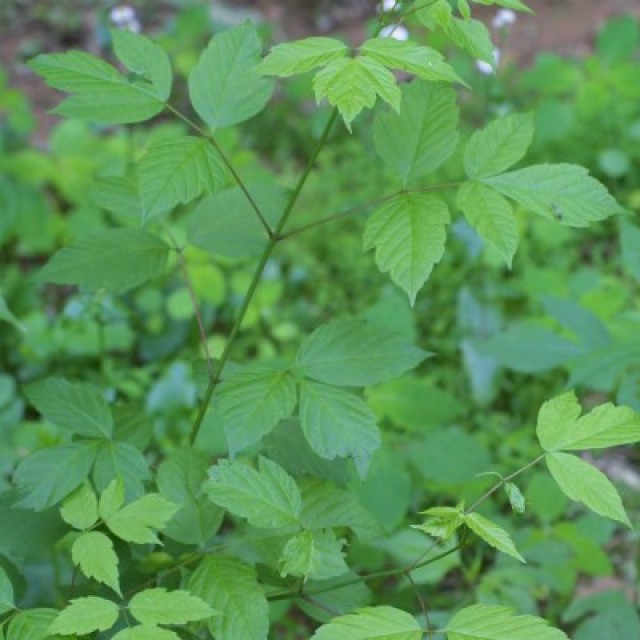COMMON NAME
Boxelder
SCIENTIFIC NAME
Acer negundo
ALSO KNOWN AS
Ash-leaf maple, California boxelder, Manitoba maple, Western boxelder
Plant family
Soapberry (Sapindaceae)
Plant group
Deciduous Trees and Shrubs
Boxelder is part of the maple family but is unusual in that it has compound leaves. Seedlings of this plant have a remarkable resemblance to poison ivy, so be careful!
548 reports
171+
OBSERVERS
548+
OBSERVATIONS
Identification hints
Boxelder is unusual among maples in that it has compound leaves. Seedling and young saplings of Boxelder have a remarkable resemblance to poison ivy - so be careful!
Did you know?
Boxelder has decreased in its native range because of clearing of bottomland forest for agriculture, but they have greatly increased in urban areas. The success of the species on disturbed urban sites is due to its prolific seed production and wide dispersal, ease of germination, tolerance of low oxygen conditions, and fast growth on clay or heavy fill. Boxelder also is found as a pioneer species on disturbed upland sites where a seed source is nearby. Boxelder trees are either male or female, although occasionally you may find a bisexual flower that has both anthers (male) and a stigma (female). No individual tree produces both pollen and seeds.
DISTRIBUTION IN TH U.S.
Alabama
,
Arkansas
,
Arizona
,
California
,
Colorado
,
Connecticut
,
Delaware
,
Florida
,
Georgia
,
Iowa
,
Idaho
,
Illinois
,
Indiana
,
Kansas
,
Kentucky
,
Louisiana
,
Massachusetts
,
Maryland
,
Maine
,
Michigan
,
Minnesota
,
Missouri
,
Mississippi
,
Montana
,
North Carolina
,
North Dakota
,
Nebraska
,
New Hampshire
,
New Jersey
,
New Mexico
,
Nevada
,
New York
,
Ohio
,
Oklahoma
,
Oregon
,
Pennsylvania
,
Rhode Island
,
South Carolina
,
South Dakota
,
Tennessee
,
Texas
,
Utah
,
Virginia
,
Vermont
,
Washington
,
Wisconsin
,
West Virginia
,
Wyoming
HABITAT
Boxelder trees favor stream sides and river bottoms at elevations of 5900 ft (1800 m) and lower. They particularly favor heavy and wet soils that are seasonally flooded. Its native range extends from the east coast of the US to California, and from Alberta to Mexico. The range is relatively continuous in the eastern US, but broken into small areas in the West. It has become naturalized in areas far outside of its native range.
ATTRIBUTES
Leaves
The leaves are opposite and pinnately compound. This means that the maple-leaf looking parts that appear to be the leaves are actually the leaflets and are arranged along a central axis called a “rachis”. The entire leaf is 5 to 8 in (13 to 20 cm) long. There are 3 to 5 leaflets per leaf, with the central leaflet being the largest. Leaflets are 2 to 5 in (5 to 12 cm) long with 3 to 5 lobes and toothed margins.
Flowers
The flowers are small and yellow-green, with no petals. They are borne in hanging, drooping clusters. Boxelder trees are either male or female, although occasionally you may find a bisexual flower that has both anthers (male) and a stigma (female). No individual tree produces both pollen and seeds. Flowering generally begins early to mid-spring (March to May) Flowering may occur with or just before the leaves emerge. The flowers are wind pollinated but also visited by bees.
Fruits
The flowers develop into pairs of reddish, finely hairy fruits that are 1 to 1.5 in (2.5 to 4 cm) long and hang in long clusters. They are easily-recognized due to their similarity to small pairs of “helicopter blades” which spin through the air as they disperse from the parent tree. Fruiting generally occurs from August to October.
Bark
On young trees, the bark is smooth, but it develops ridges and furrows in older trees.
See Menu
Budburst is a project of the
Chicago Botanic Garden
One of the treasures of the
Forest Preserves of Cook County
Creative Commons
BY-NC-SA 4.0
- 2021 Chicago Botanic Garden. All Rights Reserved.
- Terms of Use
- Privacy Policy
- Data Sharing and Citation Policies
- 2021 Chicago Botanic Garden. All Rights Reserved.



